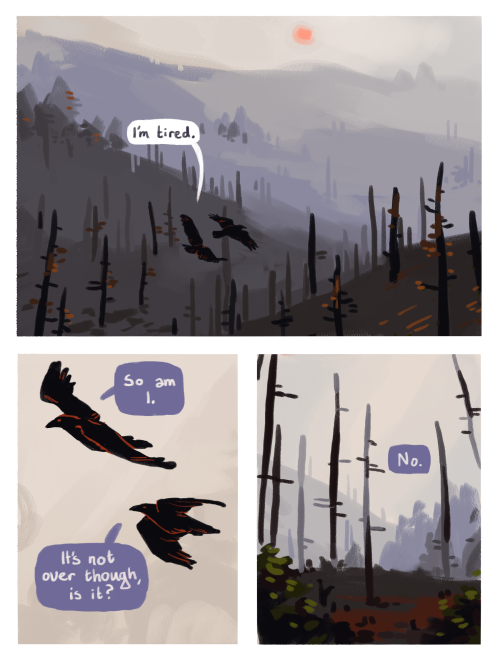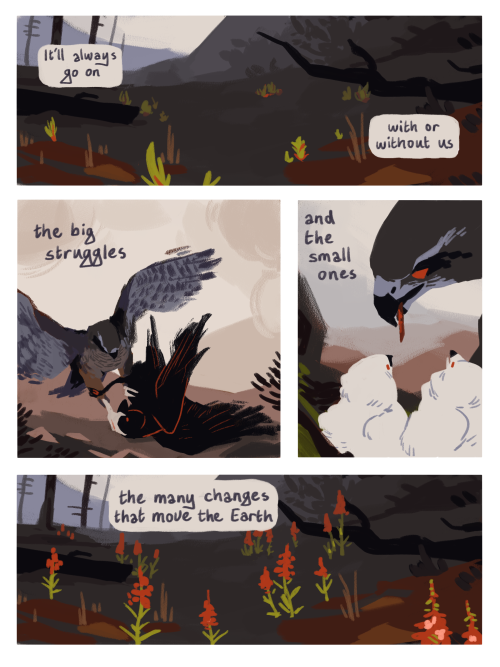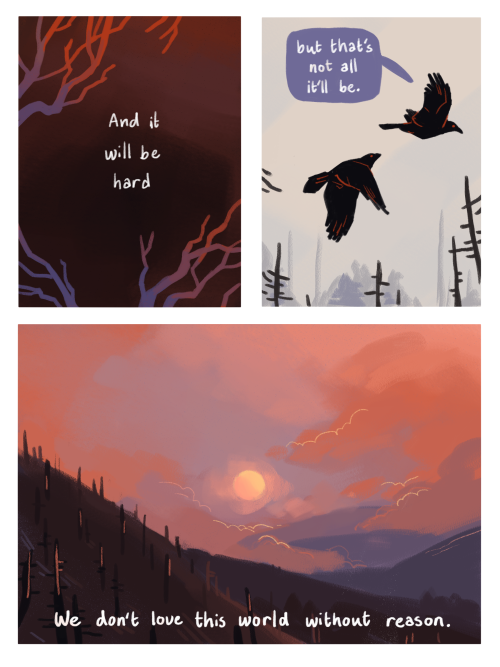Writing Has Two Stages:
Writing has two stages:
1. you can't stop
2. you can't start to save your life
More Posts from Shamrockskullscarabs and Others

"Ah, September! You are the doorway to the season that awakens my soul... but I must confess that I love you only because you are a prelude to my beloved October." 🍁🎃🌙
- Peggy Toney Horton
Enrique of Malacca
Circumnavigating the world is no easy feat, especially when the world’s geography was so uncertain in the past. And while the world celebrates Magellan’s effort and success, Malaysians take pride in its success in honour of an entirely different person, known simply as Enrique of Malacca or Henry the Black.

Statue of Enrique in the Maritime Museum of Malacca, Malacca City, Malaysia. Photo obtained from Wikipedia.
A voyager of Malay descent, Enrique met Magellan when the Portuguese conquered Malacca in 1511, putting Enrique under Magellan’s workforce as his slave. In 1519, Enrique was enlisted in Magellan’s fleet to set sail around the Earth primarily due to his ability to speak the Malay language (which was the lingua franca of the region at the time). He accompanied Magellan throughout the expedition until the Battle of Mactan and Magellan’s death, after which he left the Magellan expedition on 1st May 1521 with the presumed intention of heading back to his homeland.

The route taken by the Magellan expedition, with milestones highlighted. From Cebu, had Enrique returned back to his home in Malacca, he would have been the first person to circumnavigate the Earth. Photo obtained from Wikipedia
Though there are no concrete records of Enrique after he left the expedition, there lies the possibility that he may have been the first person to circumnavigate the globe instead of the Magellan expedition. In order to claim the title, Enrique would have to reach his homeland which is considered HIS starting point instead of going back to Spain before September 1522, which is when the Magellan expedition entered Spain through Sanlúcar de Barrameda, their starting point when they first started the journey. However, as no record ever made light of this matter, it is currently unknown whether Enrique ever did make his way back to his homeland or lost his way somewhere.

Cebu island in the Philippines. The last place where Enrique was recorded alive after he left the Magellan expedition. Photo from Wikipedia.
While the truth of Enrique’s fate may present itself in the future, it is still a national pride that a native of Malaysia from Malacca managed to be a part of one of the most historical maritime expeditions of the early 1500s.
Ready to pounce an unseen victim or victims, the tiger draws our attention to it first before our minds wander to the raging storm and billowing vegetation in the background and foreground. It is an inspirational, haunting piece on the powers of desperation or determination, where our subject drags us in its devotion to the point of ignoring everything else that's happening elsewhere.
Perhaps that was the mind-state that Henri Rousseau was experiencing at the time of the painting's creation. A late bloomer in the art scene, he could have been desperate or determined enough to make a breakthrough into the art world. And that desperation or determination is poured into the painting where despite the dangers of the raging storm, our tiger is either very desperate or very hungry for food. Either way, it is a very dangerous mix to have that state of mind.
Perhaps, it was a good thing that his artwork was accepted at the Salon des Independants. Wonder what would have happened if the painting was rejected again, in that state of his?

Henri Rousseau, Tiger in a Tropical Storm, 1891.

Imagine yourself as an insect, a water beetle to be exact, swimming around searching for food when all of a sudden, a giant frog swallows you whole! What would you do then?
For Regimbartia attenuata, the only option besides accepting your fate and dissolving quietly is to search for the rear-end exit. Shinji Sugiura, an ecologist at Japan's Kobe University, discovered that these amazing beetles actively escape death by swimming through a predator's digestive tract and exiting from its butt, intact with no observable damage.
Regimbartia attenuata escaping from the vents of Pelophylax nigromaculatus and Hyla japonica (4× speed). Video credit to Current Biology
While rare, the phenomenon is not unheard of as certain snail species are known to seal their shells shut and await excretion to survive being eaten by birds or fish. However, what makes this particular research fascinating is that the prey (water beetle) is actively escaping the predator (frog) rather than passively waiting for the digestion process to be complete.

Hypothetical escape route of Regimbartia attenuata through the frog digestive system. Photo credit to Kobe University.
For further reading, you can click on the following link for the research article published in Current Biology on August 3, 2020.

The Tenement - a menace to all by Udo J. Keppler, (1872 - 1956) The illustration shows the spirits of alcoholism, opium, dens, prostitution, gambling and street crime, as well as the figure of Death, issuing from a tenement house
Le Manoir du Diable (1896)
Considered the earliest horror film ever made, Le Manoir du Diable, French for House of the Devil, is an 1896 silent film by George Méliès about two wandering cavaliers and how the Devil played tricks on them.
Far from being terror-inducing, the entire 3-minute short film (quite ambitious at the time) was actually a comic sketch meant to evoke laughter and amusement from its audience, rather than fear. It was presumed lost until the late 1980s when a copy was found again and restored by the New Zealand Film Archives.
“If the coffin hits anything at all, Death will come back for more.”
That’s what old people say.
In the Philippines, whenever someone dies, we hold a wake for 5-7 days. During this time, friends and family visit the deceased to pay their respects. There are prayers, feasting, singing and games. A celebration of a life that once was.
And the most critical moment? The last one on the last day. Pallbearers must ensure that when moving the coffin from the family home into the funeral hearse… it never hits a corner, a wall or anything at all.
Because according to superstition, if it does, Death considers it an invitation to return to the home and fetch more souls.
I’ve heard numerous anecdotes about this being true. Told over and over again. Stories passed down for generations. A family of five that all died within a week. Friends who passed away within days of each other. An entire village that was felled by what seemed like a plague. All because a coffin hit a wall.
But none of it is true.
My ancestors made it up.
To keep the truth hidden.
They were seven siblings in all. Four girls and three boys. The first six were supernaturally blessed. The youngest was not.
Today, we don’t care if this happens. So what if little Johnny can’t tell the future or cast a spell? He could be a successful lawyer, doctor, entrepreneur. He’s not missing out on the chance to become fulfilled in this incarnation.
But back then, being a “Squib” in a witching family meant you were worthless.
And so Teofilo and Saturnina — the eldest two — asked the rest, “Should we share our powers with our youngest?” And they all said yes.
A ritual was performed. Orisons were chanted. Blood magic was invoked. And so their powers flowed, from one sibling to another. Which means they now shared one life. If one dies, the rest would follow.
Then and until very recently, traditional witches in my country pretended to be Catholics. The truth would have made them outcasts. Labelled as evil.
And so to hide the supernatural way they would die in the future, and prevent their children being branded as witches, the siblings made up a superstition and spread it: “If the coffin hits anything at all, Death will come back for more.”
Many decades after they planted the seed, it fully bloomed. So when Crisanta, the third sibling, died of an illness, and the other six followed within a matter of minutes… nobody suspected they were witches.
Instead, all the neighbors said, “Alas. The pallbearers must have hit a wall, inviting Death to come back for more.”
Kan- wa ma kan.
It was- and it was not.
It's how all the stories start. They tell you of what was and what wasn't, but they don't tell you which is which.
Perhaps you are seven. Perhaps you are eight. You ask the sweet, greying hakawati (story crafter) "but a'amu (uncle), was it real?" Your eyes bright with eagerness and hope. And he tells you, his smile never faltering, "kan wa ma kan, my child. It was and it wasn't. Perhaps it is real. Perhaps there were caverns and theives and treasure. Perhaps there were empires and warriors and charmers. Perhaps it was the land of mysteries- the very land that Shahrazad spoke of. And perhaps it was not."
You close your eyes to better imagine the stories the old man tells. What a wild thing it was, your imagination- and even wilder his was, for the stories he crafted were his own. Flying carpets. Music. Mercenaries. A king's banquet. A marid (jinn) to make your wishes come true. "But was it?" You ask. Desperately hoping it was. And more so wishing it is. "It was and it wasn't," your hakawati says smiling.
You can smell the sweet smoke from the altars that burn ever so steadily; consuming an offering to gods long forgotten. You can hear the echoes of music long since silenced. You see the dances of people long dead. You know their stories. "But was it?" You press further. "It was and it wasn't," the old man says, his smile never fading.
You're out in the golden dunes of Arabia. A glistening object catches your eye and you take hold of it- and you are knocked back by the force of the marid storming out. "Shobeik lobeik. A'bdak bein edeik. Your wish is my command." He says. But you have no desire for anything other than answers "was it real?" You ask, but he disintegrates into whatever nothingness he came from, leaving you asking yourself whether or not it was. Whether or not you are.
You are growing up. You are now thirteen. You have yet to stop asking "was it?" Your father says it was not. Your brother says it was not. Your friend says it was not. But you are wild and stubborn. You say "but what if it was?" And they laugh you off.
Four years later and you are seventeen; and the raging fire of the stories' magic within you dims to embers. Your hakawati has long since passed away. You keep his smile tucked into a fold so deep in your heart you nearly forget about it. And you stop asking for stories. You stop asking "was it?" And what is even worse, though, is that you start to believe that perhaps, after all, it was not. That it never was.
But I am here to tell you this; it was. You spoke to the marid. You heard the music. You saw the people dancing and you smelled the offerings to their gods. It might be so deep within you, as deep as your beloved hakawati's smile is buried. And I want you to know that you, now, have your answer.
-
 mrbexwrites reblogged this · 1 month ago
mrbexwrites reblogged this · 1 month ago -
 bloodstain liked this · 1 month ago
bloodstain liked this · 1 month ago -
 scribble-dee-vee liked this · 1 month ago
scribble-dee-vee liked this · 1 month ago -
 write-with-will liked this · 1 month ago
write-with-will liked this · 1 month ago -
 spideronthesun reblogged this · 1 month ago
spideronthesun reblogged this · 1 month ago -
 spideronthesun liked this · 1 month ago
spideronthesun liked this · 1 month ago -
 harryissuchalittleshit reblogged this · 2 months ago
harryissuchalittleshit reblogged this · 2 months ago -
 princesscedar liked this · 2 months ago
princesscedar liked this · 2 months ago -
 erics-meep-morps liked this · 2 months ago
erics-meep-morps liked this · 2 months ago -
 sweetcreme liked this · 2 months ago
sweetcreme liked this · 2 months ago -
 sunnylittledragon reblogged this · 2 months ago
sunnylittledragon reblogged this · 2 months ago -
 sunnylittledragon liked this · 2 months ago
sunnylittledragon liked this · 2 months ago -
 xasteri-nyxta reblogged this · 2 months ago
xasteri-nyxta reblogged this · 2 months ago -
 xasteri-nyxta liked this · 2 months ago
xasteri-nyxta liked this · 2 months ago -
 namelessismyprice reblogged this · 2 months ago
namelessismyprice reblogged this · 2 months ago -
 daamazingmeepers liked this · 2 months ago
daamazingmeepers liked this · 2 months ago -
 jess-the-mess2513 liked this · 2 months ago
jess-the-mess2513 liked this · 2 months ago -
 bramble-born liked this · 2 months ago
bramble-born liked this · 2 months ago -
 writingrefsasifiweregoingtowrite reblogged this · 2 months ago
writingrefsasifiweregoingtowrite reblogged this · 2 months ago -
 everrgrreeen reblogged this · 2 months ago
everrgrreeen reblogged this · 2 months ago -
 farrahda5hy reblogged this · 2 months ago
farrahda5hy reblogged this · 2 months ago -
 boonester44 liked this · 2 months ago
boonester44 liked this · 2 months ago -
 dreamingamethystdragons reblogged this · 2 months ago
dreamingamethystdragons reblogged this · 2 months ago -
 etherealamberdust liked this · 2 months ago
etherealamberdust liked this · 2 months ago -
 leahcee reblogged this · 2 months ago
leahcee reblogged this · 2 months ago -
 leahcee liked this · 2 months ago
leahcee liked this · 2 months ago -
 mossterious liked this · 2 months ago
mossterious liked this · 2 months ago -
 rubiminions liked this · 2 months ago
rubiminions liked this · 2 months ago -
 ittybittytatertot reblogged this · 2 months ago
ittybittytatertot reblogged this · 2 months ago -
 pyrojirah reblogged this · 2 months ago
pyrojirah reblogged this · 2 months ago -
 decembercamiecherries reblogged this · 2 months ago
decembercamiecherries reblogged this · 2 months ago -
 vvatermelanie reblogged this · 3 months ago
vvatermelanie reblogged this · 3 months ago -
 decembercamiecherries liked this · 3 months ago
decembercamiecherries liked this · 3 months ago -
 slipperygaloshes reblogged this · 6 months ago
slipperygaloshes reblogged this · 6 months ago -
 slipperygaloshes liked this · 6 months ago
slipperygaloshes liked this · 6 months ago -
 wasssssssup liked this · 1 year ago
wasssssssup liked this · 1 year ago -
 dazeddelir1um liked this · 1 year ago
dazeddelir1um liked this · 1 year ago -
 its-yasleepygal liked this · 1 year ago
its-yasleepygal liked this · 1 year ago -
 maevewritesx liked this · 1 year ago
maevewritesx liked this · 1 year ago -
 lawrencecroft reblogged this · 1 year ago
lawrencecroft reblogged this · 1 year ago -
 the-honey-dukes reblogged this · 1 year ago
the-honey-dukes reblogged this · 1 year ago -
 flusteredoddball liked this · 1 year ago
flusteredoddball liked this · 1 year ago -
 autie-hobbit reblogged this · 1 year ago
autie-hobbit reblogged this · 1 year ago -
 the-jolly-jackass liked this · 2 years ago
the-jolly-jackass liked this · 2 years ago -
 addictvibe liked this · 2 years ago
addictvibe liked this · 2 years ago -
 proustiansleep reblogged this · 2 years ago
proustiansleep reblogged this · 2 years ago

55 posts



